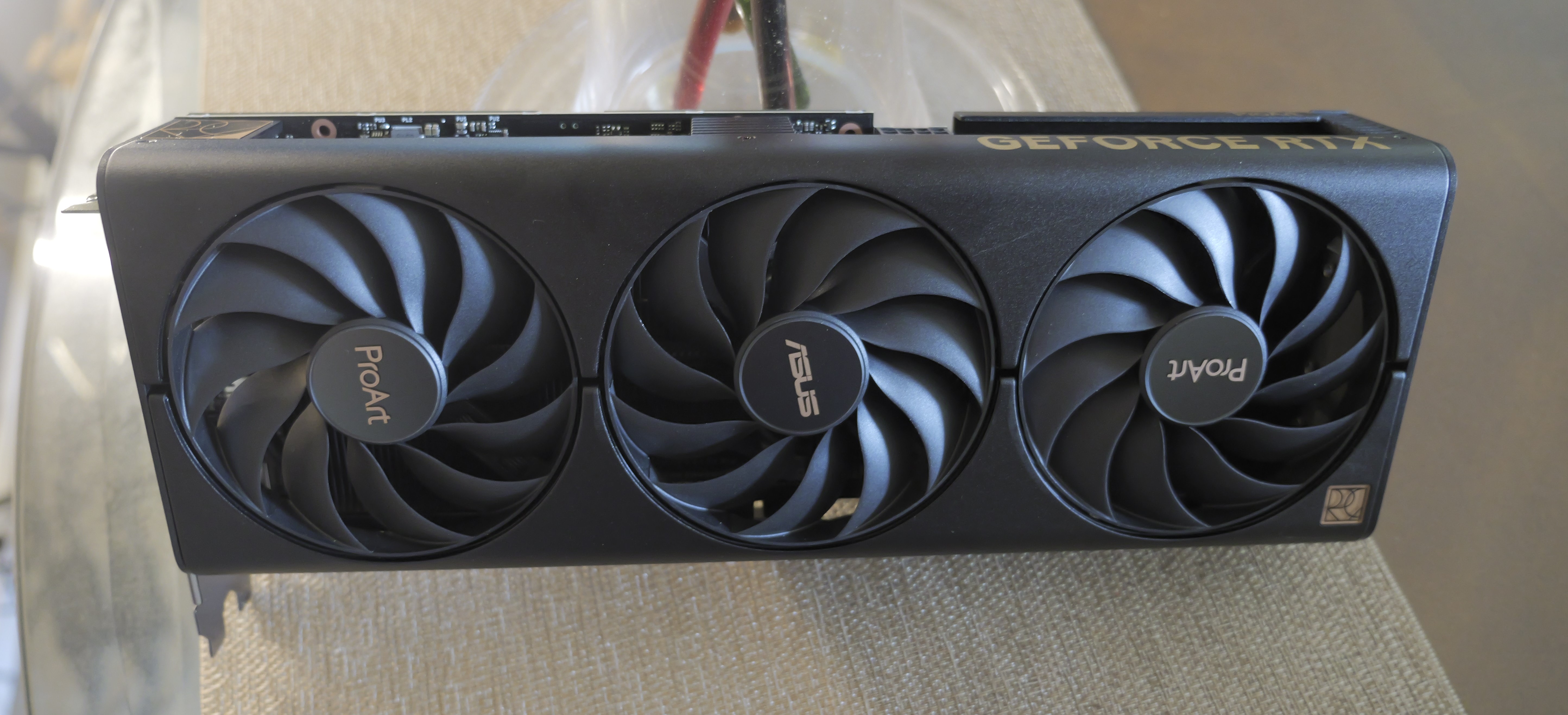Our Verdict
If you are a graphics pro, what you get for the money on the ASUS ProArt RTX 4060 Ti card seems like a no-brainer. It belies its almost entry-level position with what it offers in power and memory. So if you do heavy Photoshop lifting or even heavy Blender lifting, this card will get you through your day. It is as nearly the perfect “journeyman” graphics card as I have ever worked with. And yet, at a price and power consumption just about anyone could live with.
For
- Pro-quality card
- Modern NVIDIA features/tech
- Very reasonable purchase/operating costs
Against
- Gamers hate the price (Tip: It’s not a gamer card!)
Why you can trust Creative Bloq
Here we look at the ASUS ProArt RTX 4060 Ti that comes with an impressive 16 GB of video RAM installed. With a street price of under $500US, it may be one of the most versatile and competitively priced “productivity” cards today. (In other words, let’s not confuse the needs of gamers and makers.)
But what’s the difference between a general graphics-capable computer, and a real graphics/multimedia workstation? Sure, the latter generally has a more powerful CPU and more storage. But for those that understand the core needs of 3D, video editing/compositing and now AI, the first component to check out will always be the Graphics Processing Unit (GPU), or more simply, the video card.
This is because over the years, the more demanding workflows have increasingly placed their heavy lifting onto the shoulders of our GPU chips. There are some very good, and perhaps some less rational reasons for this, but it is how computer design has evolved. (As opposed to “integrated” solutions that exist on the lower end, like AMD and Intel integrated GPUs. And those on the high end, like Apple’s “unified” M chips with GPU.)
The upside to this reliance on GPU power is that we can simply swap out our video card and upgrade a hugely important subsystem of our computer in a snap. This can apply to older workstations with ageing cards (make sure your new card supports your old PCI), custom-built computers, and even most off-the-shelf boxes (though many pre-builts are notorious for non-standard mounts, so check first!).
Asus Creates a New Market Sector
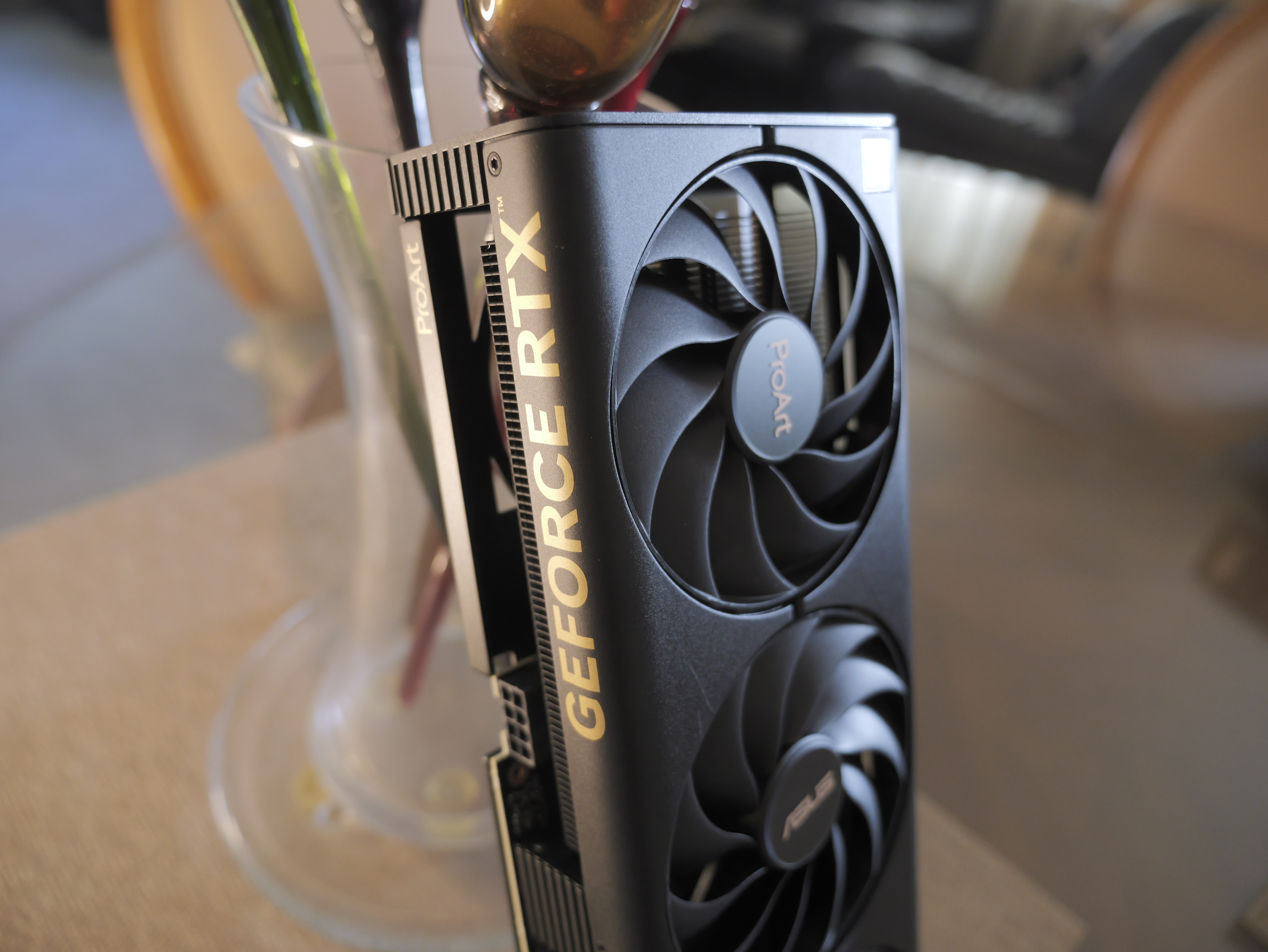
For decades, ASUS has been one of the most innovative component developers in the PC space. They have pioneered tech for the gaming, workstation and server markets. And now with their ProArt line of components, they have set their sights on improving workstations and tools specifically designed for the professional content creator.
While aesthetics should NOT be the sole reason for choosing one computer over another (hear that, Mac-folk?), it would be unrealistic to not acknowledge that as creatives we appreciate good industrial design. And the ASUS ProArt line is nothing if not beautifully slick design. With cases, components and even video cards, all styled in a minimalist matte black finish.
ProArt’s second, and more critical claim to fame, is its across-the-board upgrading of components to a more professional capability. For example, the ProArt line of GPUs comes with tweaked “studio” software. And hardware enhancements, for example, 3 cooling fans instead of the gaming version’s two.
Daily design news, reviews, how-tos and more, as picked by the editors.
While ProArt video cards are not built to the same criteria as true “workstation” graphics cards, they won’t cost you the huge price of one either. On the other hand, the ProArt cards are only a small premium cost over regular gaming cards.
ProArt 4060Ti/16GB: Its place in the lineup
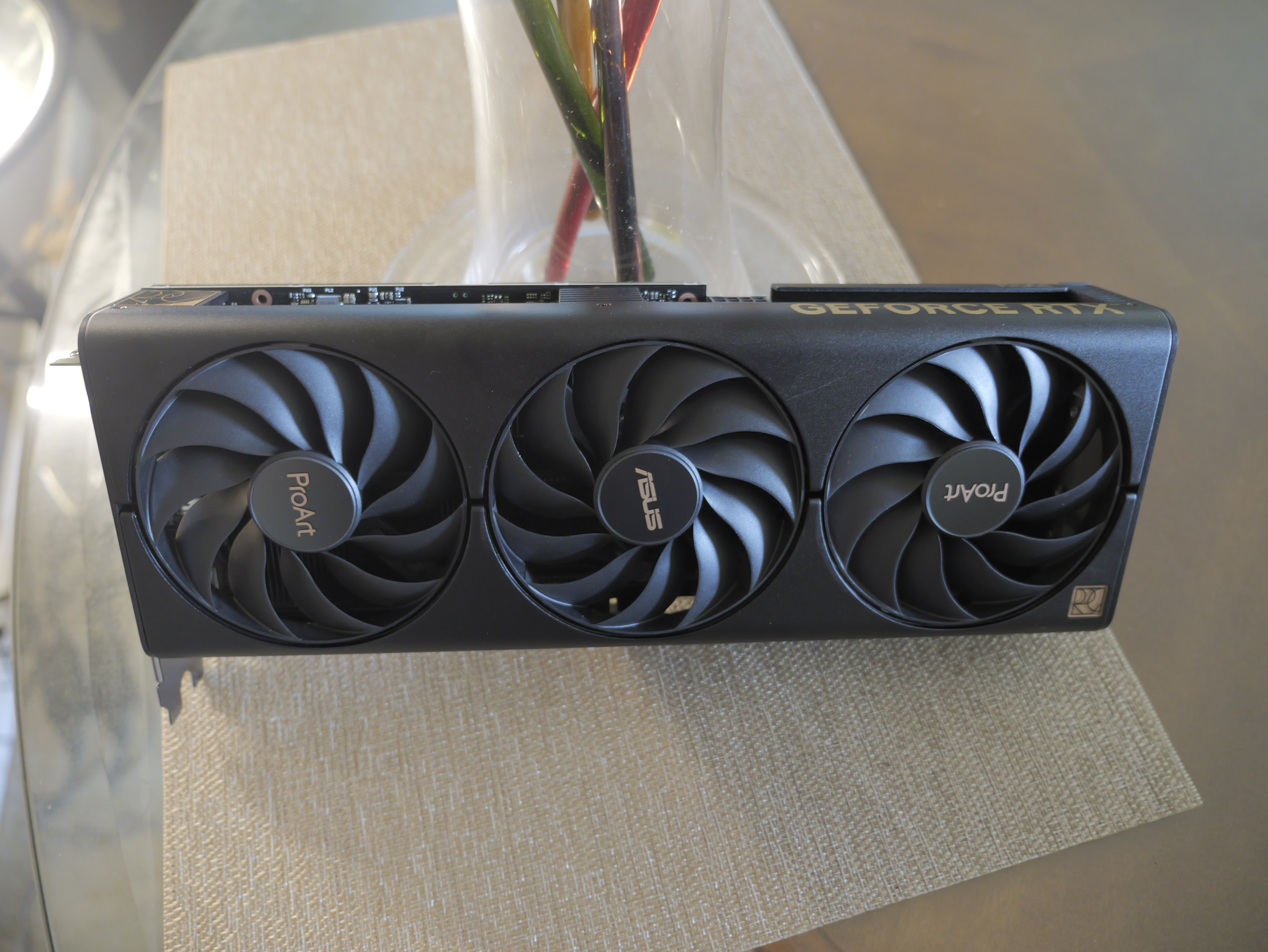
The ProArt line of cards mirrors NVIDIA’s chipsets that they are based upon. This includes the entry-level 4060, then the 4070, then the 4080 and last the 4090. Four chipsets/cards isn’t hard to grasp. But there are enhancements for each card that can create another one or two cards in between those four. Those enhancements are designated with the addition of the “Ti” (as with the card reviewed here), and “Super” versions. Thus, potentially upping the selection to 12 cards in the lineup.
There is one other criterion that helps differentiate one card from another, and that is the amount of video RAM included. While VRAM used to be extremely expensive, prices have come way down. Still, cards with more VRAM, like this card sporting 16GB, are still a premium at checkout.
Interestingly, while content creators should - mostly - have little trouble continuing to work on an 8GB video card, gamers have largely outgrown it. As a content creator, getting the 16GB version for around $100 more is strongly recommended if future-proofing is important to you.
Let's go to the specs...
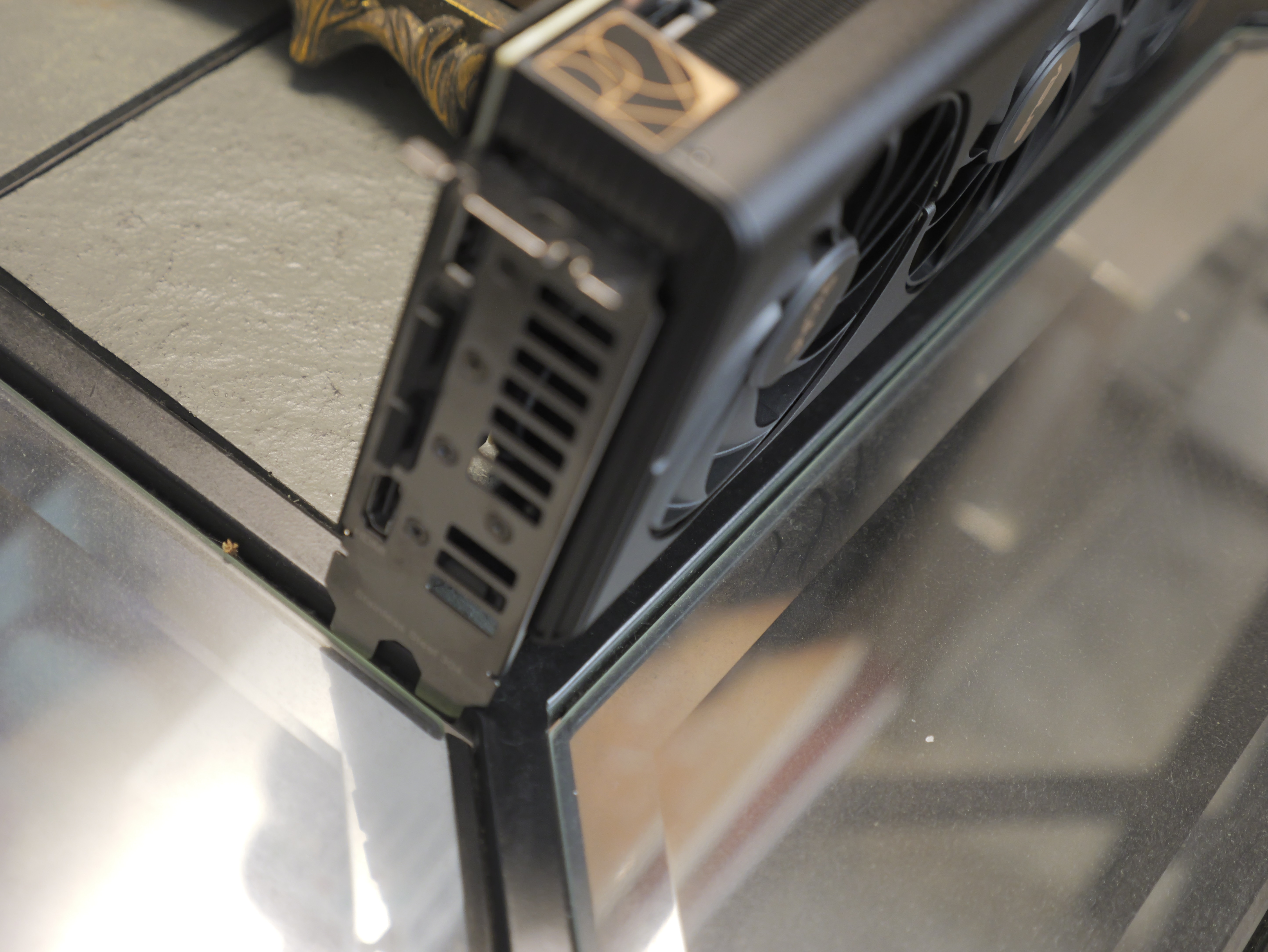
Here’s the dirty little secret about video cards. Just about any recent card will open Blender or Adobe Premiere, and work like a charm. This includes the base ProArt 4060/8GB card we reviewed earlier. The plain 4060 can add a few 3d models and textures and work just fine. And as we said in that review, if your needs for 3d and similar high-end work is limited, then you are good to go.
But what happens if you need to create a whole 3d scene with a lot more geometry and texturing? Well, that’s where the base 4060 card may begin to get laggy and not keep up. If you are truly doing a lot of heavy graphics for your daily work, then a nice top-of-line ProArt 4090 might be your best option. But at almost $1,800US, and its need for much higher wattage and power supplies, it certainly isn’t for everyone. Not even every 3D pro.
The next full card up from the bottom is the ProArt 4070. This card comes with 12GB standard and is currently selling for around $580US as of this writing. That is an appealing option, for sure. But how does the 4060/16 fit in between the 4060 and 4070?
| Header Cell - Column 0 | 4060/8GB | 4060 Ti/16GB | 4070/12GB |
|---|---|---|---|
| RRP | $359 | $499 | $579 |
| Architecture: | Ada Lovelace | Ada Lovelace | Ada Lovelace |
| CUDA cores: | 3,072 | 3,552 | 5,888 |
| Ray-tracing cores: | 24 | 32 | 46 |
| Tensor cores: | 96 | 128 | 184 |
| Base clock (MHz): | 2,550 | 2,655 | 1,920 |
| Overclock (MHz): | 2,580 | 2,685 | 2,475 |
| VRAM (GB) GDDR 6: | 8 | 16 (8 also avail.) | 12 |
| L2 Cache (MB): | 28 | 32 | 36 |
| Bus width: | 128 bit | 128 bit | 192 bit |
| Effective Mem Speed: | 17 GB/s | 18 GB/s | 21 GB/s |
| Wattage draw: | 115W | 160W | 200W |
| PIN connector: | 8-pin | 8-pin | 2x 8-pin |
| Display connections | HDMI, 3x DisplayPort | HDMI, 3x DisplayPort | HDMI, 3x DisplayPort |
| Slot required | 2.5 | 2.5 | 2.0 |
Just by looking at the specs, we can see how snugly the 4060Ti fits in between the other two. (Even though the 4070’s base and OC speeds run decidedly slower, the broader bus and other enhancements clearly compensate for that.)
Benchmark scoring
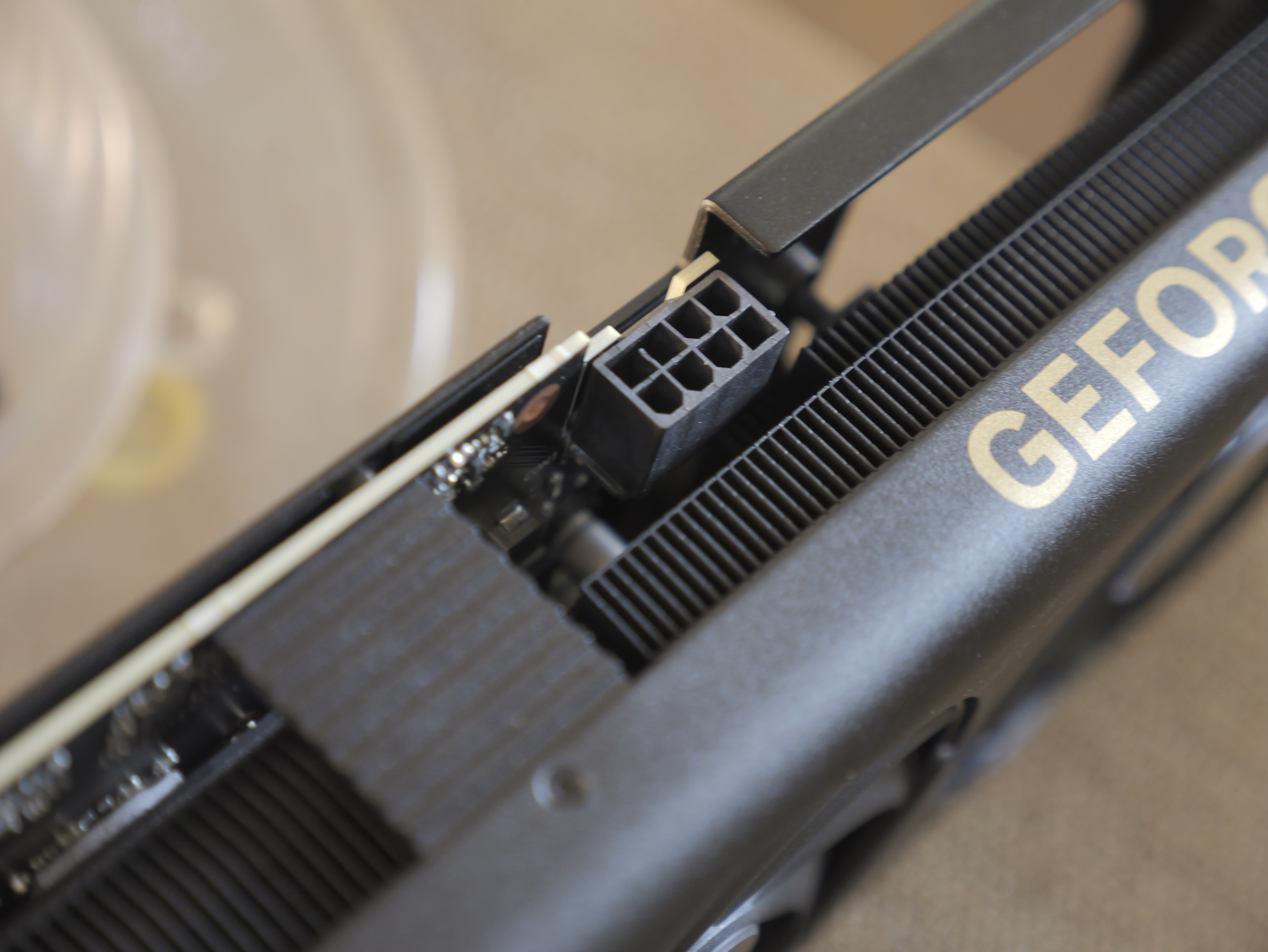
In real-world benchmarks, we see some of those specifications play out. Keep in mind that while the ProArt line is an enhanced design, we aren’t looking for or expecting significant speed differences. Except, perhaps if we ventured into over-clocking, which these chips are designed for. The ProArt line’s better cooling systems may pay dividends in slightly more speed. (We did not test this theory.)
For the benchmarks, we wanted to focus on the types of projects that require more GPU power and memory. Things like 3d and video rendering. And in addition to comparing the 4060Ti to its siblings, we also wanted to compare its benchmarks to that of AMD’s RX7700/12GB ($400US) and/or its workstation equivalent, the W7700/16GB ($980US).
| Card name | PassMark G3D Mark (higher=better) | Tom's Hardware FPS@1040 | Userbenchmark (lower=better) | Userbenchmark Comparative % (Averaged) | Blender 3D Benchmarks (higher=better | PugetBench Photoshop |
|---|---|---|---|---|---|---|
| 4060 8GB | 19,587 | 62 | 122 | 81% | 3,325 | 8,185 |
| 4060 Ti 16GB | 22,892 | 75 | 145 | 100% | 3,832 | 8,171 |
| 4070 12GB | 27,027 | 98 | 190 | 135% | 5,625 | 8,852 |
| AMD RX7700 12GB | 22,050 | 92 | 154 | 106% | - | 8,862 |
| AMD W7700 16GB | 20,264 | - | - | - | - | - |
NOTE: Any item not populated with data indicates that either it was unavailable, or less than reliable for some reason.
Again, while benchmarks are far from perfect, they do give us a feel for what can be expected from each card. The 4060 Ti sits a bit closer to its namesake 4060 than it does to the 4070. Being that the 4070 is only $80 more, the temptation is to say “Go for it!”. But doing so means taking a 4 GB hit on V-RAM, and a lifelong hit on electrical wattage. (Am I the only person who feels guilty when I leave a power-hungry computer sitting while I’m at lunch?) Plus you will need an additional 8-pin power connector, so going 4070 or higher might force a PSU upgrade as well.
Yes, there is no shortage of “gamer” sites that have been trashing NVIDIA’s entire 4000 series. But we are not playing games here, we are productive and professional content creators. That is what this ASUS ProArt line of GPUs is all about. And for that, I believe they succeeded with very few complaints.
Performance

Let’s be subjective for a minute. As we move up the line of GPUs we need to ask at what point the total investment (money, wattage, replacement PSU) exceeds our needs. For this reviewer, The fact that the 4060 Ti sits at or just under $500 is ideal. That is the number I have never wanted to exceed for a GPU (though I have). The 160 watts and single 8-pin power connection are all numbers I can live with.
So the question comes down to performance. And yes, this card delivers in just the ways I would hope and expect it to. Tooling around Blender I can easily begin to build and render complex scenes. Yes, I can feel the speed boost over the base 4060. And while I did not “feel” the 16 GB of RAM in the testing I did, I have every confidence it will come into play as my scenes get more complex.
If anyone had told me 5 years ago that I could get a card with this power and 16GB of V-RAM, all for under $500, I’d have done backflips. I mostly feel the same way today.
Who is it for?
If you are a graphics pro, what you get for the money on this card seems like a no-brainer. It totally belies its almost entry-level position with what it offers in power and memory. So if you do heavy Photoshop lifting, or even heavy Blender lifting, this card will get you through your day. It is as nearly the perfect “journeyman” graphics card as I have ever worked with. And yet, at a price and power consumption just about anyone could live with.
Buy it if:
- You are a professional content creator
- You need a pro-quality card that’s affordable
- You do a mix of work, including multimedia
Don't buy it if:
- You do heavy-hitting 3D and video work
- If a lower-cost card will suffice (RTX 4060 or AMD’s RX 7700)
out of 10
If you are a graphics pro, what you get for the money on the ASUS ProArt RTX 4060 Ti card seems like a no-brainer. It belies its almost entry-level position with what it offers in power and memory. So if you do heavy Photoshop lifting or even heavy Blender lifting, this card will get you through your day. It is as nearly the perfect “journeyman” graphics card as I have ever worked with. And yet, at a price and power consumption just about anyone could live with.

Lance Evans is creative director of Graphlink Media (graphlink.com), a boutique creative marketing agency in NYC, with clients like Olive Garden, Miller Beer and AMEX. Lance recently launched "OPEN STUDIO | NY", a YouTube channel looking at production techniques for advertising and publishing shops. Visit it at youtube.com/@OpenStudioNY
